cultural travel
Here’s Part 3 of the Travel Like a Pro Summit, with links to the interviews with a variety of travel writers and bloggers. My segment on tips for baby boomer travelers comes up at noon.
See Parts 1 and 2 of the Travel Like a Pro Summit here. If you’ve missed some or just want extra time to view or review the segments, consider buying one of the summit’s All-Access Passes, with details below.
Now here’s your host, Jerry Winans:
Hey everyone!
Today is the third day of the 3-day Travel Like a Pro Summit! Our presenters have lots of great info to share with you. That’s the goal: Equipping you to travel safely, affordably, and adventurously! Many of us are eager to get back out there, to see the world, but we know it’s best for now to stay home to safeguard our health and… Continue reading
Here’s a way to get some of your travel juices flowing even if you’re confined at home for safety purposes, as I am, and can’t travel for the time being.
It’s the three-day Travel Like a Pr0 Summit, with Jerry Winans as ringmaster and interviews with more than 20 travel writers and bloggers, including yours truly. It’s filled with travel tips that, with good fortune, we’ll all be able to use as the world eventually return to normalcy.
I hope you’ll find it informative and inspirational, in a time when we could all use a little inspiration — keeping in mind the thousands of Americans and those around the world who have lost their lives to COVID-19, many of whom contacted the coronavirus while traveling in infected areas, on cruise ships, and in other settings.
Links to the interviews for days one and two are available today; watch… Continue reading
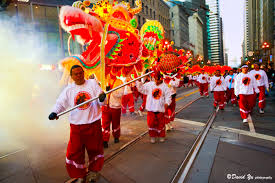
Chinese New Year parades are always colorful, noisy, and popular in much of the world.
Chinese New Year (also known as Spring Festival), starts on January 25 this year and continues for 15 days.
It’s the most important festival time of the year in China — when millions of Chinese travel to their home villages and cities to be with family or friends for holiday reunions. (We can only hope the coronavirus now threatening China is safely contained and allows for such visits this year.)
This is the Year of the Rat, the first of the 12 rotating Chinese Zodiac signs. The mythological rat is said to have used his cleverness to trick his way to the top of the zodiacal order — and, though more maligned today, is considered a symbol of wealth and fertility in traditional Chinese culture. The rat also symbolizes getting a fresh start.
Chinese New… Continue reading
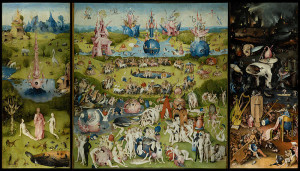
First setting eyes on The Garden of Earthly Delights, by Hieronymous Bosch, was for me a numinous experience
Previously, I wrote about hodophobia: the fear of travel, and some ways to conquer it.
Today’s topic is a bit more fun and upbeat: some less-known — and generally quite obscure — terms that reflect the essence of the love and fascination of travel. (Some aren’t confined strictly to travel, but offer insight into it.) Some of the terms are from English, and some from other languages.
The latter are particularly interesting to me because they capture some nuances that English does not. (And because of that, I may miss some of that nuance — so if you’re among the native Portuguese, German, or Swedish speakers who follow this blog, please free to correct me.)
Let’s start with a pure travel term that’s the opposite of hodophobia: hodophilia.
Hodophilia (English, noun)… Continue reading
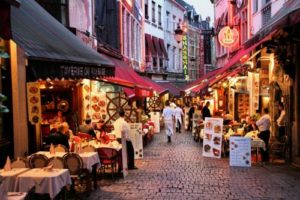
If it’s Tuesday, this must be the Rue de Bouchers in Brussels. Photo from Shutterstock.
Today’s guest post, by Canadian resident Robert Waite, argues that baby boomers should slow down a bit in pursuing bucket list items and spend more quality time in a destination to absorb the culture and life of the people there.
As Bob told me, his piece is meant to stir debate, and I found myself debating his points within my own mind — which is exactly what a good piece of journalism should provoke.
I’ll share my opinions on this topic in a later post, but for now I’ll yield the floor to Bob:
By Robert Waite
Those of us of a certain age might recall the film “If It’s Tuesday, This Must be Belgium,” a 1969 United Artists release that poked fun at American tourists for their penchant for rushing from European… Continue reading
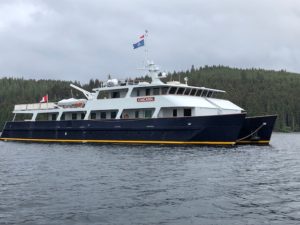
The expedition ship MV Cascadia sailed the Haida Gwaii islands. Photo by Robert Waite.
In Part II of Robert Waite’s chronicle of his trip to remote Haida Gwaii — an archipelago off the west coast of Canada, in British Columbia — he takes us aboard the MV Cascadia, a small expedition vessel that holds a maximum of 24 passengers.
Along with comfortable accommodations and amenities, the Cascadia provided plenty of opportunities for visiting the islands, formerly known as the Queen Charlottes, where the biological diversity is the richest on earth and Haida tribal culture is making a comeback.
If you haven’t read Part I of this two-part series, I suggest you go there now and you’ll have the full context for reading about this extraordinary journey.
By Robert Waite
Once aboard the Cascadia, much of our seven-day voyage was determined by weather and tides.
Tides on the east… Continue reading
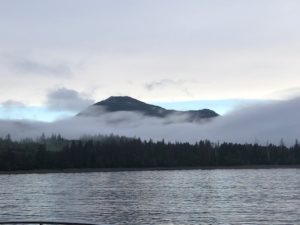
Haida Gwaii’s mist-covered islands are sheer magic. Photo by Robert Waite.
In this post, Part I of a two-part series, guest contributor and baby boomer Robert Waite chronicles his journey to little-visited Haida Gwaii, previously known as the Queen Charlotte islands, off the coast of British Columbia.
Part I offers an introduction to the tumultuous history and compelling culture of the islands, while part II will detail his voyage through them aboard the MV Cascadia, a small expedition ship that allows for shallow landings and coastal kayaking trips while balancing comfortable accommodations with environmental protection.
Getting to explore Haida Gwaii personally is a far cry from the distant views afforded from Alaska-bound cruise ships as they pass Haida Gwaii sailing along the Inside Passage, often in the dead of night. Like me, if you’ve made that trip, you may have wondered what you were missing on those islands. Now we… Continue reading
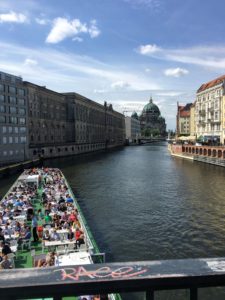
Berlin sightseers have plenty of options for boat rides around the city. Photo by Lia Norton
Here’s part two of Lia Norton’s mini-series on Berlin. The first post focused on art and food in the cutting-edge German capital, which apparently has inspired several readers to add it to their bucket lists.
In this post, Lia writes about some of the more unexpected experiences that both surprised and charmed her, making her visit to Berlin so memorable.
By Lia Norton
Berlin by Boot
There are plenty of options for seeing Berlin by water, but whichever you choose, don’t miss out on this special way of traversing the city. Berlin is home to two rivers (Spree and Havel), a number of lakes, and canals that run alongside neighborhood streets, all navigable by small boat.
With sandwiches and beers in our backpacks, my partner Mike and I joined our German friend Jens,… Continue reading
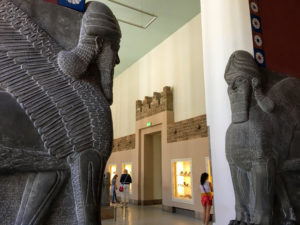
The Pergamonmuseum is filled with artworks from ancient Babylon, Islamic cultures, and classical antiquity. Photo by Lia Norton
It’s been 30 years since I was in Berlin. The Berlin Wall was about to come down, but East Germany was still hanging on and Checkpoint Charlie was still up. It was pretty grim.
Berlin, of course, has undergone tremendous changes since then, as my daughter, Lia, writes about in her first guest post for this blog. The city is now a swirl of activity, culture, and culinary experimentation.
In this post, Lia focuses on Berlin’s art and food, both of which she absorbed with gusto. For baby boomers like me who remember Berlin mostly as an outpost of the Cold War, the transformation is a revelation — I can’t wait to go back.
By Lia Norton
The last time I was in Berlin, back in 2008, it was for a… Continue reading
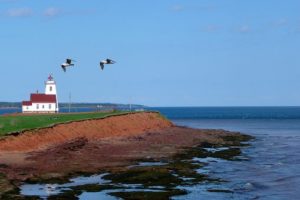
One of Prince Edward Island’s historic lighthouses. Photo from Pixabay.
One of my regrets from our years spent in upstate New York (before moving to Tucson) was not spending more time in the Canadian maritime provinces. Somehow we never made it to Prince Edward Island, for example, but one of these days…
In any event, this guest post from Josh Patoka reminds me of what we’ve missed — and, I hope, will inspire others to go where we have not (yet).
By Josh Patoka
Literary fans know Canada’s Prince Edward Island (PEI) best as the setting of Anne of Green Gables, but there are plenty of things for baby boomer travelers with other interests to see and do there.
The island combines rolling scenery, a relaxed pace of life, historic lighthouses, fresh seafood, and biking and hiking trails — along with Anne of Green Gables-related activities, of… Continue reading








